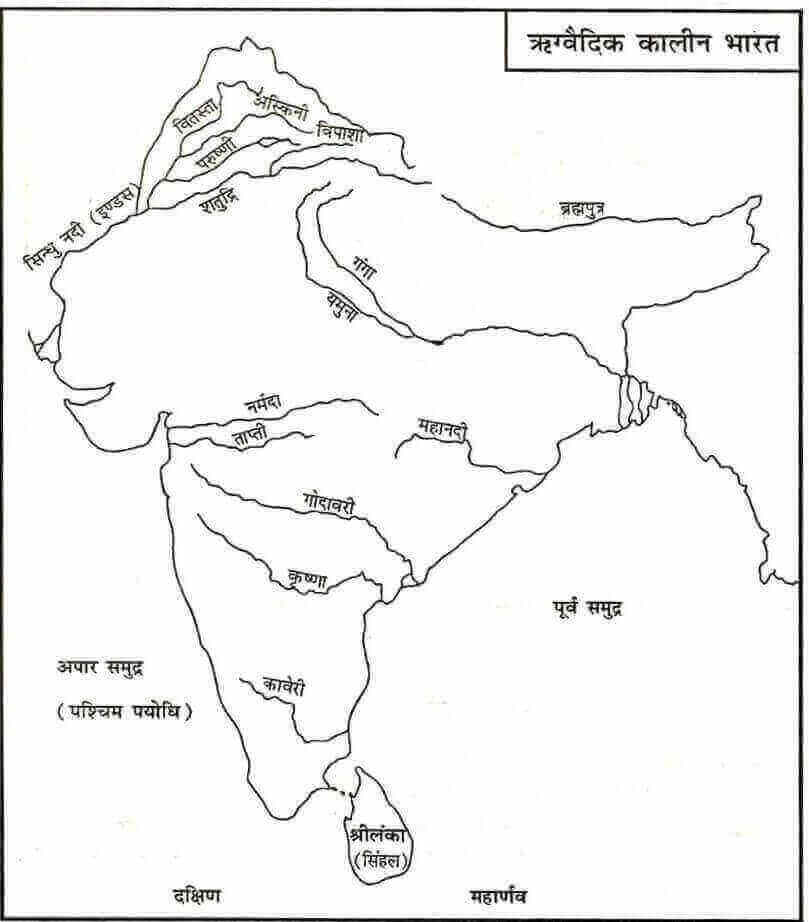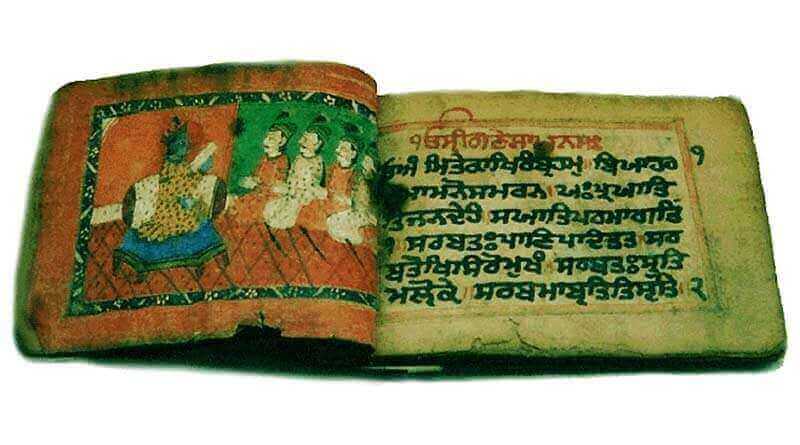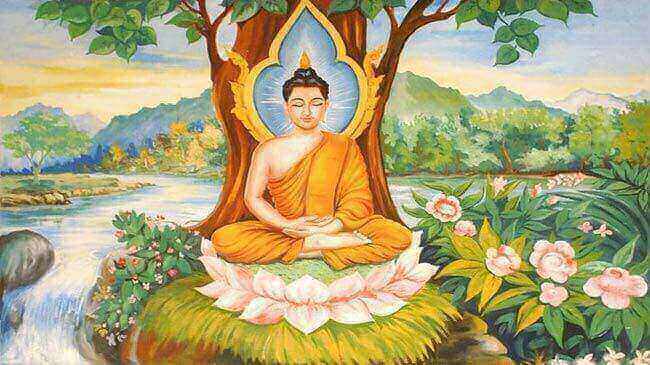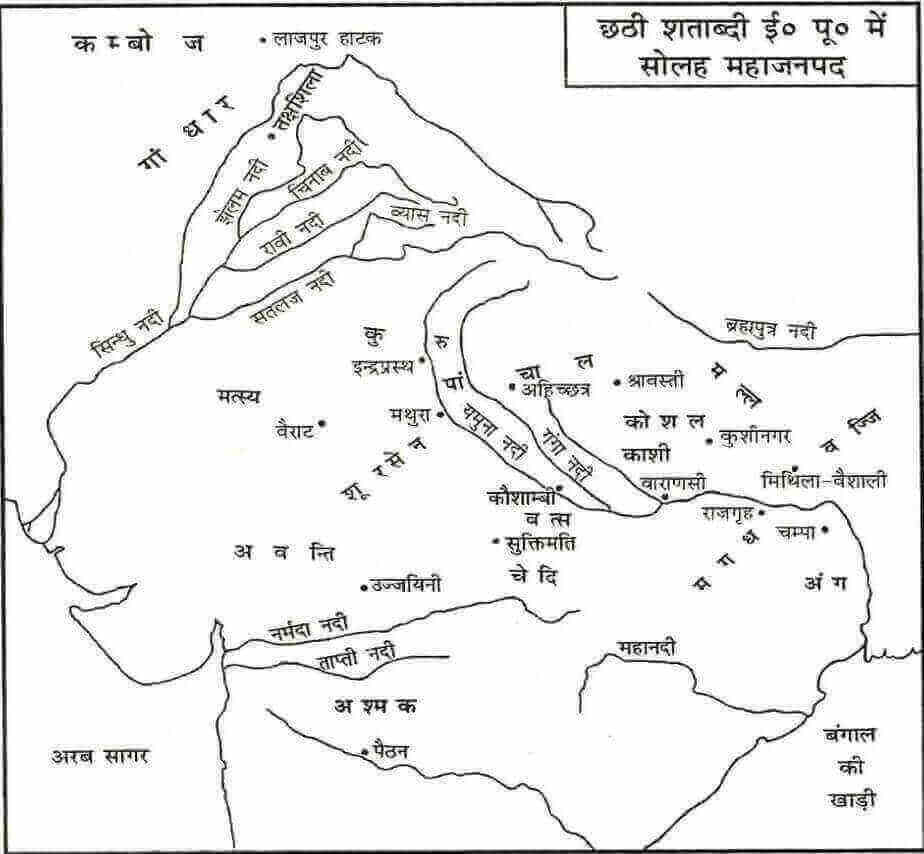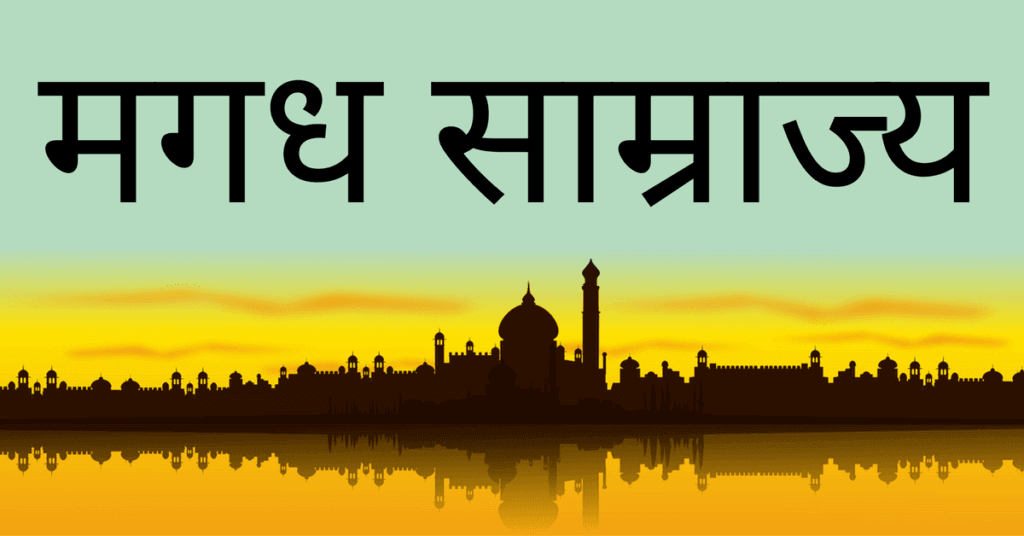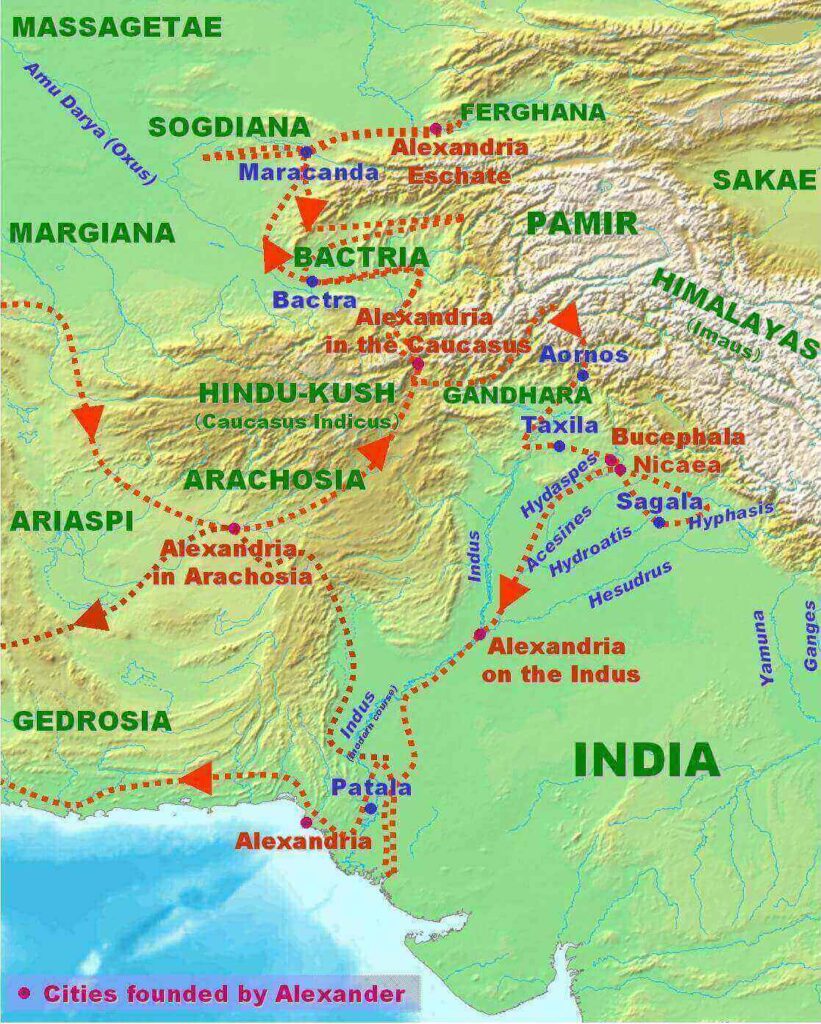Vedic Civilization » Rigvedic Period, Post Vedic Period
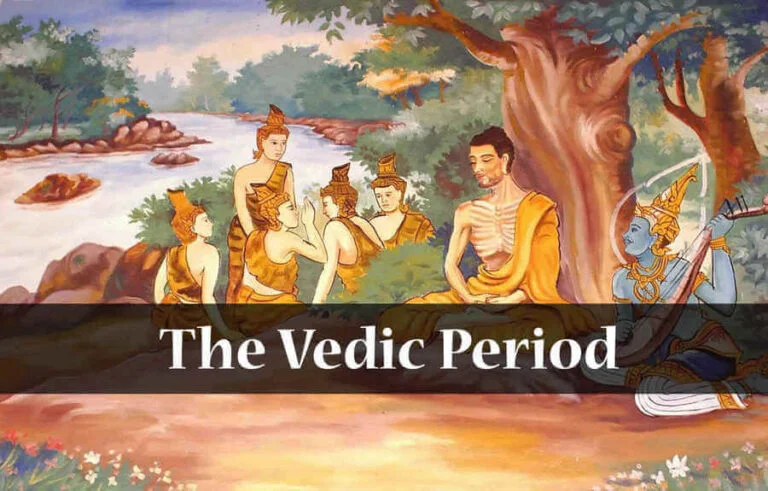
(A) Rigvedic Period – It Is Known As 1500 BC- 1000 BC. It Is Assumed.
(B) Post Vedic Period – It Is Called 1000 BC- 600 BC. It Is Assumed.
- Max Muller Has Considered Central Asia To Be The Original Abode Of The Aryans .
- In India, Aryans First Settled In The ‘Saptasindhu’ Region. This Area Was The Area Of Modern Punjab And Its Surroundings.
| Ancient Name | Modern Name |
|---|---|
| Kubhu | Kurram |
| Good Luck | Swat |
| Kubha | Kabul |
| Gomti | Gomal |
| Vista | Jhelum |
| Parushani | Ravi |
| Vipasha | Diameter |
| Visually Impaired | Ghaggar |
| Askini | Chinaw |
| Shatudri | Sutlej |
Rigvedic Period
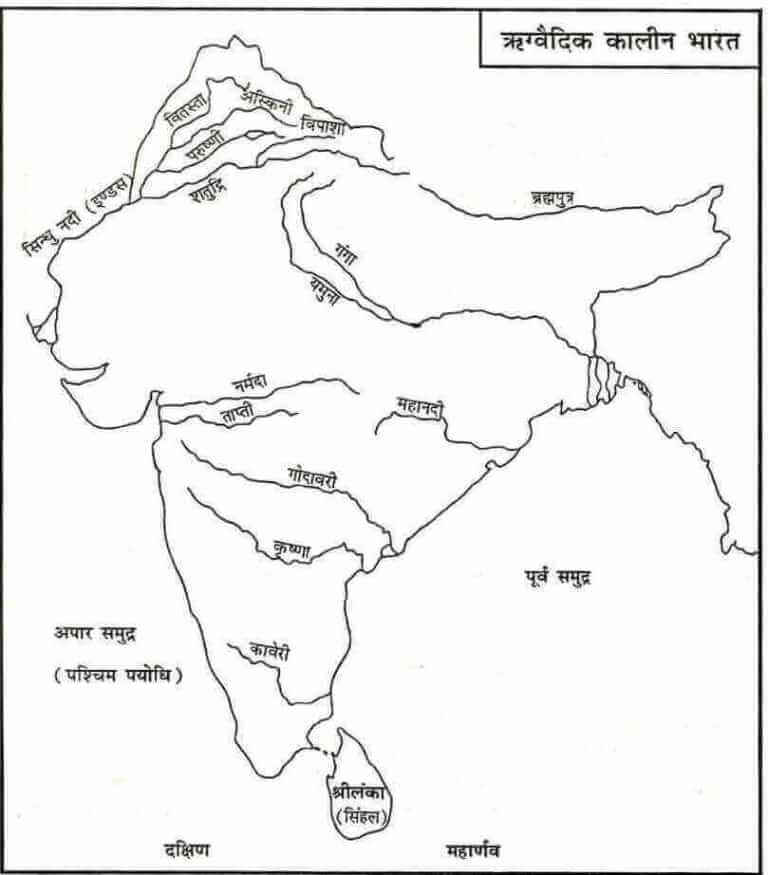
- The Rigvedic Aryans Were Divided Into Many Small Tribes.
- In Rigvedic Literature, The Tribe Is Called ‘Jana’.
- The Chieftain Of The Clan Was Called ‘Rajan’, Who Was The Ruler.
- The Smallest Political Unit Was The Kul Or Family, Many Clans Formed The Village With ‘Gramani’ As Its Head, Many Villages Together Were ‘Vish’, Whose Head Was ‘Vishpati’ And Many ‘Vish’ Together Were ‘Jana’. Whose Head Was The ‘Raja’.
- In Rigveda ‘Jana’ Is Mentioned 275 Times And ‘Vish’ 170 Times.
- The ‘Sabha’, ‘Samiti’ And ‘Vidatha’ Were Political Bodies. The Family Was Patriarchal.
- The Caste System In The Society Was Based On Karma. The ‘Purusha Sukta’ Of The Tenth Mandala Of Rigveda Consists Of Four Varnas, Brahmins, Kshatriyas, Vaishyas, Shudras; Is Mentioned.
- ‘Soma’ Was The Main Drink Of The Aryans And ‘Yava’ (Barley) Was The Main Food Item.
- The Position Of Women In The Society Was Good.
- At This Time ‘Widow Marriage’, ‘Niyoga System’ And ‘Remarriage’ Were Prevalent In The Society But ‘Purda System’, ‘Child Marriage’ And ‘Sati-Pratha’ Were Not Prevalent.
| Visit | Author |
|---|---|
| Sankhya | Kapil |
| Yoga | Patanjali |
| Justice | Gautam |
| Epistemology | Gemini |
| Uttar Mimamsa | Badarayan |
| Vaisheshik | Kanad Or Uluk |
- The Greatest Importance Was Given To ‘Indra’ Among The Deities Of The Rigvedic Period And After That ‘Agni’ And ‘Varuna’ Were Given Importance.
- In The Rigveda, Indra Has Been Called ‘Purandar’ Meaning ‘The Destroyer Of The Fort’. There Are 250 Hymns For Him In The Rigveda.
Post Vedic Period
- The Main Feature Of The Political Organization Of The Later Vedic Period Was The Establishment Of Large States And Janapadas.
- The ‘Theory Of Divine Origin’ Of Kingship Is First Mentioned In ‘Aitareya Brahmana’.
- The Importance Of The King Increased During This Period. His Position Became Hereditary.
- In The Later Vedic Period, Families Were Patriarchal. The System Of Joint Family Existed.
- Society Clearly Has Four Varnas; Brahmins, Kshatriyas, Vaishyas And Shudras; I Was Divided The Varna System Was Based On Caste Rather Than Karma.
- The Condition Of Women Was Not Good. They Did Not Have Money Related And Any Kind Of Political Rights.
- The First Four Ashrams In ‘Jabalopanishad’; Brahmacharya, Grihastha, Vanaprastha And Sannyasa; Details Are Available. ,
- There Was Complexity In Religious And Sacrificial Rituals.
- The Main Deities During This Period Were Prajapati (Brahma), Vishnu And Rudra (Shiva).
- The First Evidence Of The Use Of Iron Dates Back To 1000 BC. Found From Atranjikheda (Uttar Pradesh) Of Uttar Pradesh.
Ashram – Hermitage
‘ Labor ‘
The Word Ashram, Derived From The Root, Means To Do Labor Or Industry. Thus There Are Places In The Ashram Where After Staying For Some Time, A Person Develops Some Necessary Qualities And Is Ready For The Further Journey. Dr. Prabhu Has Described The Ashrams As The Resting Place In The Journey Of Attainment Of Salvation – The Ultimate Goal Of Life. Assuming The Age Of Man To Be 100 Years, He Was Divided Into 4 Ashrams. The Duration Of Each Ashram Was Fixed At 25 Years. These 4 Ashrams Are – Brahmacharya Ashram, Grahastha Ashram, Vanprastha Ashram, Sannyasa Ashram.
Brahmacharya Ashram
It Is A Period Of Preparation, Training, Study And Discipline In Life. In This State, The Young Man, Accumulating All His Energy, Used To Live A Life Of Labor And Sadhana, Staying Away From The Passions. The Main Objective Of This Ashram Was To Make The Child Self-Reliant And To Train Him For Household Life.
Grihastha Ashram
In This Ashram, A Person Moves Towards Fulfilling Religious And Social Obligations. This Ashram Starts After Marriage. In This Ashram, The Production Of Human Children, The Editing Of Guest Yajna, The Editing Of Agnihotra, The Growth Of The Economy, The Editing Of The Sacrificial Rites Used To Work For The Protection Of The People Of The Ashram And Charity. In This Ashram, A Person Used To Get Rid Of Three Debts And Perform Panch Mahayagya.
Three Debts
1. Dev Debt : Salvation Through Various Religious And Sacrificial Rituals
2. Indebtedness : Salvation By Methodical Study Of Vedas
3. Father’s Debt : Liberation Through Procreation According To Religion
Panch Mahayagya
1. Dev Yagna Dev Yagna : To Make Sacrifices In The Fire During The Yagya
2. Pitra Yajna Pitra Yajna : Worship Of Ancestors, Respect
3. Nr (Guest) Yajna Nr (Guest) Yajna : Proper Hospitality To Guests
4. Bhoot Yajna Bhoot Yajna : Observance Of Living Beings.
5. Brahma Yajna Brahma Yajna : Study Of Vedas And Self-Study
Vanaprastha Ashram
Of Man At The Age Of 50. Entrance Was To Vanprastha Ashram. Under This Ashram. The Aim Of The Person Was To Strive For The Attainment Of Dharma And Moksha. After Entering This Ashram, Human Beings Are Separated From Kama And Artha. He Would Get Salvation.
Sannyas Ashram
75 Years Of Life Of The Person 100 | The Intervening Period Of The Year Was For The Sannyasa Ashram. In This Ashram, Human Beings Were Trying To Attain Salvation By Getting Rid Of The Bondage Of Religion, Meaning And Sex And Lived In The Forest.
Efforts
Purushartha Is Made Up Of Two Words Purusha And Artha Which Mean The Goal Of The Rational Being. One Of The Meanings Of Purushartha Is Also To Do Industry Or Effort, That Is, To Make One’s Desired. To Venture To Attain (Salvation). Purushartha 4 Are Dharma, Artha, Kama, Moksha.
Religion
The Person Should Proceed On The Path Of Duty And Motivates Them To Fulfill Their Responsibilities. Religion Is Man And Maintains The Existence Of Society. Every Ashram. The Person Has Been Asked To Act According To Religion.
Meaning
It Has Been Used In A Broad Sense. It Signifies All The Necessities And Means Of Material Pleasures. Under This Negotiations (Agriculture, Animal Husbandry, Commerce) And Politics Have Also Been Included.
Job : Work
It Means All Those Desires Whose Man Attains Worldly Pleasures By Fulfillment. In Indian Religious Philosophy, The Main Purpose Of Kama Is Considered To Be The Increase Of The Lineage Through The Production Of Children.
Moksha : Salvation
It Means Destroying The Ignorance Of The Heart. To Get Rid Of The Cycle Of Birth And Death. Its Relation Is Soul. Is From. In Buddhist Philosophy It Is Called Nirvana And In Jain Philosophy It Is Called Kaivalya.
Sacrament
The Literal Meaning Of ‘Sanskar’ Is ‘Purity’ Or ‘Refinement’. Their Main Purpose Is To Save The Person From The Effects Of Inauspicious Forces. Its Material Purpose Is To Achieve Worldly Prosperity. Is. Although The Rites Are Not Duly Mentioned In The Vedic Literature, Yet It Is Believed That Its Rise In The Later Vedic Period. Happened. Classical Discussion Of The Sacraments First. It Is Derived From ‘Vrihadaranyakopanishad’. The Number Of Sacraments Has Also Been Told Differently, But Most Scholars Recognize Only 16 Sacraments. These Are The 16 Sacraments.
- 1. Conception
- 2. Pusvan
- 3. Semantonyanyan
- 4. Caste Karma
- 5. Nomenclature
- 6. Exodus
- 7. Annaprashan
- 8. Chaulkarma
- 9. Ear Piercing
- 10. Vidyarambh
- 11. Upanayana
- 12. Vedarambha
- 13. Keshant
- 14. Rotation
- 15. Marriage
- 16. Funerals
(1) Conception
In This Ritual, Which Was Prevalent In The Later Vedic Period, A Man Used To Sow Seeds In The Womb Of A Woman For The Purpose Of Getting A Child. ,
(2) Punsavan
In The Third Month After Conception, This Sanskar Was Performed For The Attainment Of A Son.
(3) Marginal Promotion
It Was Done For The Protection Of The Pregnant Woman And For The Longevity Of The Unborn Child.
(4) Caste : Castration
Immediately After The Birth Of The Child, The Father Used To Touch The Child And Utter Blessings In His Ear. Its Purpose Was To Protect The Child From Evil Obstacles.
(5) Naming : Nomenclature
On The 11th Day After Birth The Baby Was Named.
(6) Evacuation
This Ceremony Was Performed When The Child Went Out Of The House For The First Time.
(7) Annaprashan
Under This Rite, Food Was Fed To The Infant For The First Time. This Sanskar Was Performed In The 5th Or 6th Month Of Birth.
(8) Chaulakram ( Chudakaran )
This Rite Was Performed When The Child Was 1 Year Old Or 3 Years Old, In Which The Child’s Hair Was Cut For The First Time.
(9) ear piercing
When The Child Was 3 Or 5 Years Old, His Ear Was Pierced.
(10) Vidyarambh
Akshar Gyan Was Imparted By The Guru When The Child Was 5 Years Old.
(11) Upanayana
Under This Rite, The Child Was Initiated By Staying Near The Guru, Fasting For The Guru, Vedas, Yama, Niyama And For The Proximity Of The Deity. The Upanayana Ceremony Was Performed In The 8th Year Of A Brahmin, In The 11th Year Of A Kshatriya, In The 12th Year Of A Vaishya. After This Sanskar, The Person Was Considered To Be The Second Birth, That Is Why He Was Called Dwij. This Rite Was Forbidden For Shudras And Women.
(12) Vedarambh
This Ceremony Was Performed Within One Year Of The Upanayana Ceremony, In Which The Study Of The Vedas Was Started.
(13) Keshant
At The Age Of 16, While Living With The Guru, This Rite Was Performed For The First Time When The Student Got His Beard And Mustache.
(14) Inclusion
At The End Of Education, This Ceremony Was Performed. After That He Was Called A Graduate. The Universal Age Of This Ceremony Is Considered To Be 24 Years.
(15) Marriage
Only After This Ashram A Person Used To Enter Gahasthaashrama. Its Purpose Was Procreation. The Age Of 25 Years Is Considered Above For This Sanskar. Most Of The Religious Sources Mention 8 Types Of Marriages. They Are Like This
- 1. Brahma : After Finding The Above Mentioned Groom By The Parents And Marrying His Daughter To Him.
- 2. Daiva: Marriage Of A Girl With A Priest Who Performs The Yagya.
- 3. Arsha: Marriage Of His Daughter By The Father Of The Girl By Taking A Cow And A Bull Or A Pair Of Bulls From The Groom. ,
- 4. Prajapatya: Handing Over Your Daughter To The Groom Without Any Donation Or Dowry.
- 5. Asura: By Taking Money From The Groom By The Father Of The Girl To Marry His Daughter.
- 6 Gandharva: Love Marriage Done Against The Wishes Of The Parents.
- 7 Rakshasas: A Girl Kidnapped Or A Forced Marriage.
- 8 Paishach: Adoption Of A Sleeping Drunk Or Mad Girl For The Fulfillment Of Lust.
Fanciful Marriage
Brahma, Daiva, Arsha And Prajapatya Marriages
Reprehensible Marriage
Divorce Or Separation Was Possible In Asura, Gandharva, Rakshasa And Paisha Marriages.
(16) Funerals
After The Death Of A Person, There Was A Sacrament To Be Performed For His Happiness And Welfare In The Hereafter.
Important Facts
- The First Mention Of The Chaturvarna System Is Found In The ‘Purusha Sukta’ Located In The 10th Mandala Of Rigveda.
- In This, The Origin Of The Four Varnas Is Believed To Be From Different Parts Of Brahma.
- With The Assignment Of Each Varna Fixed, Specialization Was Encouraged.
- In The Chandogya Upanishad Only Brahmacharya, Grihastha And Vanaprastha Ashrams Are Mentioned. Purushartha Is The Psycho-Moral Basis Of The Ashram System.
- There Are Two Types Of Brahmacharis – (I) Upakurvan – Used To Enter The Home After The Completion Of Education, (Ii) Antevasi Or Nestik – Lived With The Guru For Life.
- In The Mahabharata And Yajnavalkya Smriti, 4 Classes Of Householders Have Been Mentioned – (I) Kusul Dhanya, (Ii) Kumbh Dhanya, (Iii) Ashwasthan, (Iv) Kapotimasrit. Grihastha Ashram Is Said To Be The Best Among The Four Ashrams.
- Manu Considered It Necessary To Follow The Four Ashrams Of A Person In Order, Whereas Yajnavalkya Did Not Consider It Wrong For A Person To Go Straight From The Celibacy Ashram To The Sannyasa Ashram.
- The Sages Had Made Chaturashram System Only For The Attainment Of The Four Purusharthas.
- It Was Not Possible For Everyone To Attain Salvation. Therefore, Only Dharma, Artha, Kama Have Been Called Trivarga In The Course Of Time.
- The Number Of Sacraments Is 40 In Gautam Dharmasutra, 18 In Vairavanas Grihasutra, 13 In Paraskar Sutra, 13 By Manu And 12 By Yajnavalkya.
- There Is No Mention Of Funeral Rites In Gautam Dharmasutra And Grihyasutra, As It Was Considered Inauspicious.
- Manusmriti Mentions 10 Yamas— (I) Brahmacharya, (Ii) Mercy, (Iii) Meditation, (Iv) Forgiveness, (V) Truth, (Vi) Humility, (Vii) Ahimsa, (Viii) Asteya, (Ix) ) Sweet Disposition, (X) Sense Suppression. Samskaras Imparted To The Individual The Firmness Of Character, Knowledge Of Social Values And Ideals.
| Indus Civilization | Rigvedic Civilization | |
|---|---|---|
| Equality | Bronze Age | Bronze Age |
| Era | 2300-1750 BC | 1500-1000 BC |
| Culture | Urban | Rural |
| From Iron | Unfamiliar | Post Vedic People |
| By Horse | Familiar | Familiar |
| Tiger, Elephant | Familiar | In The Later Vedic Period |
| Sacred Animal | Bull | Cow |
| Idol Worship | Prevailing | Not Popular |
| Linga Worship | Used To | Used To Hate |
| Dev Mandal | Primacy Of Goddesses | Supremacy Of The Gods |

